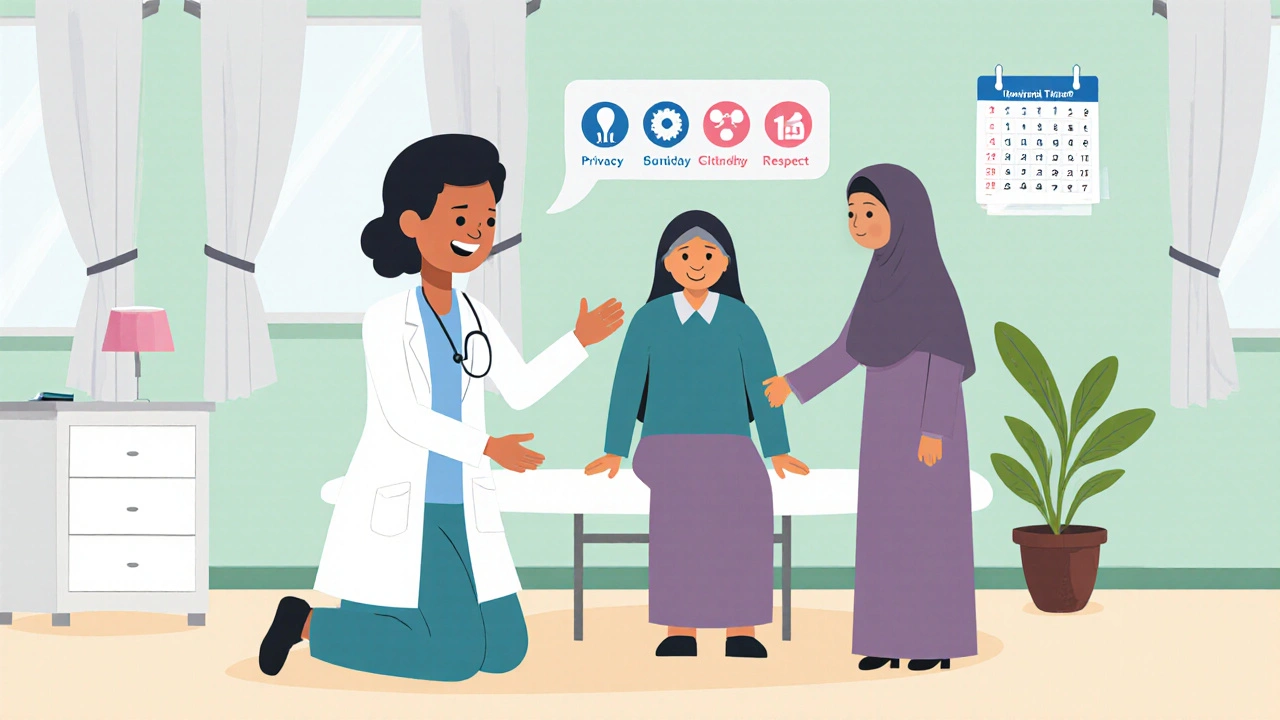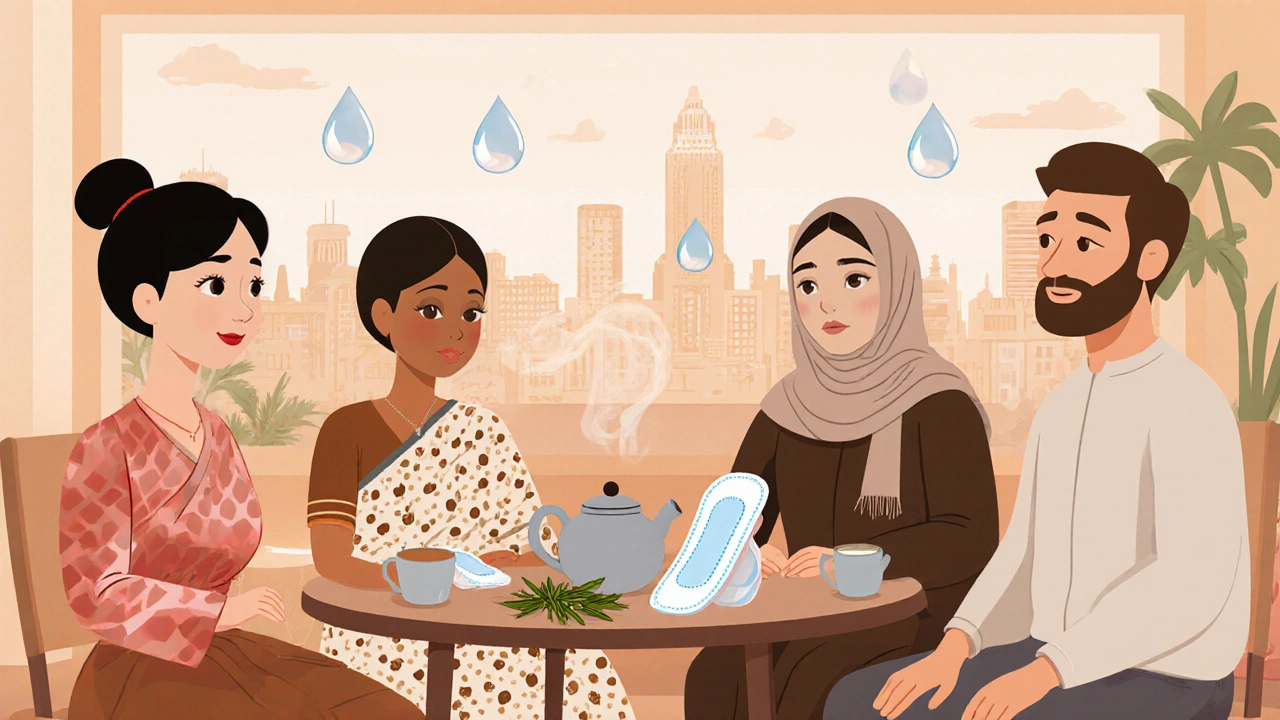Cultural Sensitivity Quiz
When it comes to Incontinence is a condition that causes involuntary loss of urine or feces, affecting people of all ages and cultures, the medical facts are only half the story. How people talk about it, where they seek help, and what treatments feel acceptable all hinge on cultural background. Ignoring those nuances can shut down communication, worsen health outcomes, and add unnecessary shame. Below you’ll find a practical guide that blends clinical knowledge with cultural awareness, so you can support anyone dealing with incontinence-no matter where they come from.
What Exactly Is Incontinence?
Incontinence isn’t a single disease; it’s a symptom group. The two most common forms are Urinary incontinence the accidental leakage of urine and Fecal incontinence the uncontrolled release of stool. Both can arise from weakened pelvic muscles, nerve damage, infections, medications, or age‑related changes. While the medical triggers are universal, the way societies interpret these triggers varies dramatically.
Global Cultural Perspectives on Incontinence
Across the world, attitudes range from open discussion to absolute taboo. Below is a snapshot of four broad regions.
- East Asia (China, Japan, Korea): In many East Asian cultures, keeping the body "clean" and maintaining face are paramount. Leakage is often hidden, and families may take over care without ever labeling the problem as a medical issue.
- South Asia (India, Pakistan, Bangladesh): Traditional medicine, especially Ayurveda and Unani, plays a big role. Herbs like ashwagandha or shatavari are used alongside modern pads, and the phrase "water problem" is sometimes used as a euphemism.
- Middle East & North Africa: Modesty is a core value. Women may avoid public restrooms, and discussions about bodily functions are rarely brought into clinical settings. Family members, especially elder daughters, are expected to manage hygiene discreetly.
- Western Europe & North America: There is more openness about health issues, and commercial products (adult diapers, pelvic‑floor trainers) are widely advertised. However, stigma still exists, particularly among men who see incontinence as a sign of weakness.
Understanding these broad patterns helps you avoid cultural missteps and choose language that feels respectful.
How Stigma Shapes Care‑Seeking Behavior
Stigma the negative social perception attached to a condition can push patients into silence. In societies where incontinence is linked to impurity, people may delay doctor visits for years, relying on home remedies instead. This delay often leads to more severe complications-skin breakdown, infections, and loss of independence.
Key ways stigma manifests:
- Language avoidance: Terms like "leakage" or "wetness" are replaced with vague phrases such as "water problem" or "personal issue".
- Family privacy: Care is kept within the household, limiting professional input.
- Gender expectations: Men may refuse treatment to protect perceived masculinity, while women might be pressured to hide symptoms to preserve marital harmony.
Recognizing these signals lets you ask the right questions without causing embarrassment.

Practical Tips for Healthcare Providers
Respectful care starts with small adjustments in communication and environment.
- Ask open‑ended, culturally neutral questions: Instead of "Do you have any leaks?", try "Can you tell me about any difficulties you notice when using the bathroom?"
- Learn local euphemisms: If a patient uses a phrase like "water problem," acknowledge it and gently translate it to medical terms.
- Offer privacy: Ensure examination rooms have curtains, and schedule longer appointments for sensitive topics.
- Involve Caregivers family members or aides who assist with daily activities early: Ask if a trusted person can join the conversation, respecting the patient’s consent.
- Provide culturally appropriate education materials: Use visuals that reflect the community’s ethnicity, dress, and language.
Communicating with Patients & Families
The goal is to build trust while delivering clear, actionable advice.
- Validate feelings: "I understand that talking about this can be uncomfortable, and that’s completely normal. Many people feel the same way."
- Explain the medical side in plain language: Describe the pelvic‑floor muscles as "the hammock that holds everything in place".
- Introduce options step by step: Start with lifestyle tweaks, then move to pelvic‑floor exercises, and finally discuss products like absorbent pads or catheterization if needed.
- Address cultural concerns directly: If a family worries about a device being visible, suggest discreet, low‑profile options.
- Set realistic goals: Emphasize improvement rather than cure-"Most people see fewer leaks after three months of consistent exercises".
Adapting Management Plans Across Cultures
Effective treatment blends Western medicine evidence‑based pharmaceuticals and devices with culturally accepted practices.
| Region | Preferred First‑Line Approach | Common Traditional Aid | Family Involvement |
|---|---|---|---|
| East Asia | Pelvic‑floor physiotherapy | Herbal teas (e.g., chrysanthemum) | Adult children manage hygiene |
| South Asia | Timed voiding & diet adjustments | Ayurvedic powders (e.g., shatavari) | Extended family involved |
| Middle East | Absorbent pads with discreet design | Prophetic medicine (e.g., honey‑based poultices) | Female relatives assist |
| Western Europe/North America | Combination of exercises and devices | Limited; focus on evidence‑based methods | Partner or hired caregiver |
When a patient mentions a traditional remedy, acknowledge its cultural value and discuss how it can safely coexist with prescribed treatments. This collaborative stance often improves adherence.

Impact on Quality of life overall physical, emotional, and social well‑being
Research from the World Health Organization shows that untreated incontinence reduces health‑related quality of life scores by up to 30 %. The drop is steeper in societies where talking about the issue is forbidden. By offering culturally sensitive care, you can reverse that trend-patients report better sleep, increased social participation, and reduced anxiety.
Resources & Support Networks
Providing a list of reliable resources shows you care beyond the clinic.
- International: International Continence Society (ICS) offers multilingual guidelines.
- Australia: Incontinence Australia provides free helplines and community workshops.
- Online communities: Forums like "Reddit r/urinaryincontinence" host peer‑to‑peer advice, but remind patients to verify medical information.
- Traditional healers: If a patient trusts an Ayurvedic practitioner, suggest they bring the practitioner into the discussion so you can coordinate care safely.
Remember, the best plan is the one the patient feels comfortable following.
Quick Checklist for Culturally Sensitive Incontinence Care
- Identify the patient’s cultural background early.
- Use neutral language; ask open‑ended questions.
- Validate emotions and acknowledge stigma.
- Invite trusted caregivers to the conversation (with consent).
- Present treatment options in order of cultural acceptability.
- Offer written materials that reflect cultural visuals and language.
- Follow up regularly to adjust the plan based on feedback.
Why is incontinence considered a taboo in many cultures?
Many societies link bodily fluids to impurity or loss of control, which clashes with ideals of cleanliness and dignity. This association creates shame, so people avoid openly discussing the problem.
How can I ask about incontinence without causing embarrassment?
Use neutral, open‑ended phrasing such as “Can you tell me about any difficulties you notice when using the bathroom?” Avoid direct words like “leak” unless the patient uses them first.
Are there traditional remedies that actually help?
Some herbs-like shatavari in Ayurveda-may support pelvic‑floor tone, but evidence is limited. The safest route is to use them alongside evidence‑based treatments and under medical supervision.
What products are discreet enough for cultures valuing modesty?
Low‑profile absorbent pads that fit inside regular underwear are popular in the Middle East and parts of Asia. Brands often market them as “protectors” rather than “diapers” to reduce stigma.
How important is family involvement in the care plan?
Very important in collectivist cultures. Engaging a trusted family member can improve adherence and ensure proper hygiene, but always obtain the patient’s consent first.
What is the role of pelvic‑floor physiotherapy?
It’s the first‑line, non‑invasive option for most types of urinary incontinence. Regular exercises strengthen the muscles that control urine flow and can reduce leaks by 40‑60 %.


Simon Waters
October 23, 2025 AT 14:18Looks like the whole cultural talk is just a front for big pharma pushing more gadgets into our homes. They dress up pads and physio kits as "culturally sensitive" to sell more. It's all about the profit, not the patient. Don't be fooled.
Vikas Kumar
November 3, 2025 AT 15:31Our ancient Indian practices have handled this for centuries, yet western doctors keep telling us to buy their expensive devices. The real solution lies in the herbs and diet that our ancestors trusted, not in foreign pads.
Celeste Flynn
November 14, 2025 AT 16:44Incontinence is a common problem that many people hide because of shame. The first step is to talk about it openly with someone you trust. You can start by describing any bathroom difficulties you notice. Simple diary keeping helps you see patterns in fluid intake and leaks. Pelvic floor exercises are the cornerstone of treatment and can be done at home. The exercises involve squeezing the muscles that stop the flow of urine and holding for a few seconds. Do the squeeze and hold routine three times a day and you will notice improvement. If leaks happen at night try limiting fluid before bedtime and using a low‑profile pad. Many cultures use herbal remedies, and some of those herbs may support muscle tone, but you should check with a doctor first. Education materials that show pictures of the pelvic muscles can be very helpful. Involving a family member with the patient’s consent makes it easier to keep the routine. Respect for cultural values means using language like water problem instead of leak if that feels safer. Over time the goal is to reduce the number of accidents and improve confidence. Consistency is key, and small weekly gains add up to big changes. Remember that seeking professional help does not make you weak, it makes you proactive about health.
Shan Reddy
November 25, 2025 AT 17:58Great rundown, especially the tip about keeping a bladder diary. I’ve found that writing down times and amounts really spots triggers that we otherwise miss.
Scott Ring
December 6, 2025 AT 19:11I hear you on the value of traditional herbs, but combining them with modern physio can give the best of both worlds without compromising cultural beliefs.